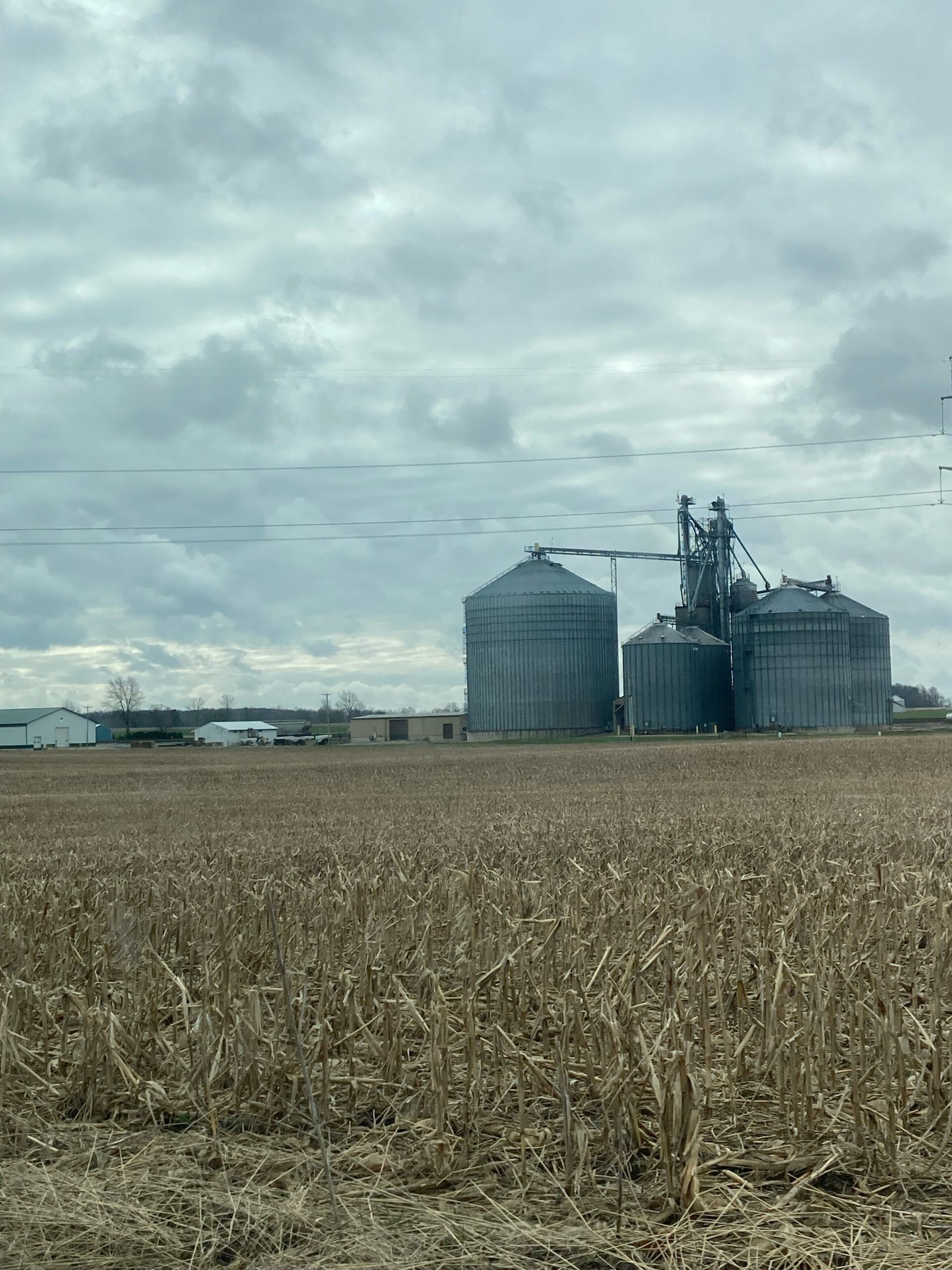Every day, news stories are developing as we find out information we didn’t know before. Some stories have a short lifecycle and relatively low global impact, like a minor grain export shipment. Other stories can last years and affect millions of peoples’ lives, like an unexpected grain stocks shortage revealed in a USDA WASDE report. This ongoing story of how events play out and interact with each other is called the “news narrative”.
Commodity grain markets have ongoing narratives as well. Grains are grown according to predictable yearly seasonal patterns (supply) and we tend to consume more of them at certain times of the year (demand). That means the general story structure tends to have similar components year to year. Think about it, like any story, a crop’s growing season essentially has a beginning (planting), middle (pollination), and end (harvest).
But as we know, every year is different for so many reasons, most of them being out of our direct control! An easy way we’ve found to follow the commodity/ ag market narrative is to focus on a few categories of market influence variables that affect supply, demand, and the price of your grain. This is designed to help interpret events so that you can make better yield and pricing decisions for your farm.
*You can also see what this looks like visually in our Market Influencers video or Grain Marketing 101 page.
It’s important to note that while there are always stories in each of these categories, certain developments in one area can have an outsized global impact compared to others. A common example of this is how Weather is a headline story all throughout the growing season because of its effect on crop yields. Conversely, during the winter, we’re not as concerned about the weekly rain forecast because Corn or Soybeans aren’t in the ground!
New developments that no one anticipated can also have such a sudden impact that they change the narrative completely. This phenomenon is often referred to as a “Black Swan” event. Oil & Ethanol demand experienced this when the COVID-19 pandemic brought global traffic to a halt. As a result, prices plummeted.
Let’s explore how these market influences affect grain prices.
Supply Factors:
Yield – This is the direct amount of grain stocks/ supply the market has (or will have) to meet global demand. This is a challenging number to accurately estimate when aggregating millions of data points that all should equal a real number of how much grain we have, i.e. grain “stocks”. Multiplying the total acres planted by the average national yield is the general calculation that gives us a macro yield number.
Yield fluctuates every year depending on planted crop acreage, weather patterns (discussed below), and agronomic/ chemical technology.
In general, Farmers will plant more or less of a crop to match the market’s price demand. When demand is high and supply of grain is low, we tend to see buyers offer higher prices to compete for scarce grain supplies. When demand is low and we yield a large crop, grain buyers or elevators have plenty of leverage, so they tend to offer lower prices for that same grain.
Weather – There’s an important old saying, “Rain makes grain.” We spend so much energy picking seed hybrids, deciding when to apply fertilizers, and monitoring plant health, but at the end of the day, Mother Nature is out of our control and has an outsized impact on yield.
In years when weather cooperates with the right temperatures and precipitation, we have the best chances of a strong average yield per acre. However, droughts (like in 2012) or times of excess rain (like during 2022’s planting period) can harm yields. Weather can also unexpectedly wipe out large swaths of crop in an instant. This happened in 2020 during Iowa’s Derecho wind event that destroyed 10 million acres of corn!
Demand Factors:
Oil & Ethanol – Approximately 40% of Corn is used to create Ethanol, which is essentially Corn alcohol. *Globally, sugarcane is also a major contributor to Ethanol stocks. Ethanol gives us security against petroleum because we can produce it domestically and it tends to be competitively priced relative to oil and gasoline.
When Oil prices are high relative to Corn and society has a demand for energy, it’s attractive to blend expensive gasoline with 10 to 15% Ethanol. However, at times when society isn’t traveling as much, like during the Coronavirus Pandemic, we’re using less oil and gasoline, so it’s not as economical to go through all the work of producing Ethanol. That’s why we saw many Ethanol plants stop production during the COVID-19 shut downs.
Meat Consumption – The amount of meat a society eats has a strong correlation with its wealth. Over the past 200 years since the industrial revolution, billions of people have left rural villages to work in urban factories or service jobs. This is a major factor contributing to the creation of the middle class. Americans experienced this in the 19th century and people all over the developing world are experiencing it today. As middle classes develop, they have extra money to spend and want to expand their diet to include more animal protein.
There are yearly seasonal patterns in meat consumption that create more demand at certain times. Everyone wants a cheeseburger or a steak at their summer grill out when the weather is nice. However, in January and February the weather is dark and cold and we just spent lots of money on Christmas presents/ travel over the holidays, so we tend to cut back on consumption and stay in.
Most Corn and Soybeans will go to feed Cows, Chickens, and Pigs. The commodity trade calls these cattle, poultry, and hogs. In the meat counter, consumers call them beef, poultry, and pork.
To reliably keep everyone fed, these animals need to eat immense quantities of grain to grow to a consumable size in a quick timeframe. That is why meat consumption is such an important factor in grain prices and global prosperity. Specifically, that can be either whole grains of Corn and Soybeans, or their byproducts, like Dry Distiller’s Grains (DDGs) and Soybean Meal.
Global Trade – The U.S. is a considered a net-exporter of Corn and Soybeans because we grow far more grain than we consume as a society. The reason we do this is because we can sell that excess grain to other countries who also want to feed their populations and fill their gas tanks with Ethanol.
If the American Farm were a store, our biggest foreign customer would be China. When global demand is high, we have to compete with other grain exporting countries (like Brazil and Argentina) on price and quality to sell our grain.
Global Trade is a prominent factor in the news narrative when foreign grain purchases are significantly above or below our expected grain exports. This is a classic demand influence because it’s directly showing how much our customers want to buy from us.
Currency (Foreign Exchange) – Closely related to Global Trade, Currency and Foreign Exchange rates determine how affordable it is for other countries to do business with us (i.e., buy our grain).
When the U.S. dollar is expensive compared to other foreign currencies, it may make our vacation to Mexico a lot more affordable, but it also makes it more expensive for our global customers to buy grain from us with the US dollar. That could reduce demand for U.S. grain and incentivize importers to seek other foreign markets or ration their own demand.
As we see with these two examples, the value of our money is a delicate balance that’s more complicated than just wanting a strong, valuable dollar.
Politics – Governmental policy affects everything from tariffs/ trade wars between global superpowers all the way to local road restrictions and weight limits in your town. Farmers pay close attention to political developments because they impact how agribusiness is conducted.
For instance, policies that advocate for blending gasoline with 15% Ethanol instead of just 10% create an outsized demand for biofuels, which would theoretically produce better prices for Farmers. Additionally, government import/ export tariffs on agricultural products affect demand and price of grains.
News Events – Current events not solely within the realm of politics or weather can arise and affect our markets. This happened when the Suez Canal was blocked by an enormous ocean vessel that halted a large percentage of global transportation. That supply chain disruption affected everything from grain movement between Asia and Europe to how long it took an Amazon package to get to your front door!
Next time you catch up on the grain markets or read an agriculture news summary, think about what type of market influence each topic covers. It may help you to organize your thoughts around an ever-changing news narrative and ultimately make more informed and profitable decisions for your farm.
a Mississippi hog operation needs to pay above the market price to account for transporting
that grain so far from where it’s grown.
Those are all examples of how elevators adjust basis to manage their flow of grain. In
some buyer-saturated river markets, that means that occasionally every elevator stays within
pennies of each other to compete for grain. This can be favorable to Farmers, which we’ll call a
“Farmer’s Market”. Elsewhere, like in certain areas of the Northern Grain Belt, Farmers have
fewer delivery options and tend to be located further away from End Users, so buyers have to
adjust basis prices to account for transportation costs. We call that a “Buyer’s Market”. That’s
why Farmers up north tend to have more on-farm storage than those down south who live
next-door to a feed mill… They need to manage their on-farm flow of grain to capitalize on
higher basis levels outside of Harvest when supply is lower. You can see what
those two markets look like here where green represents a relatively strong basis and a weaker
basis in red:
(Figure: Comparing cash markets with many options in a small distance – the “Farmer’s Market”;
and markets with only one, distant option – the “Buyer’s Market”.)
OTCs:
Unlike basis, “OTC” cash-grain futures products aren’t necessarily offered at every
elevator. We tend to see fewer OTCs offered in “Buyer’s Markets” because the Farmer has
limited delivery options, so the buyer can focus more on the basis costs associated with
shipping grain to an End User. That leaves your sale options to spot-price cash sales, forward
contracting, and hedging those positions separately in a brokerage account. When
OTCs are offered in those markets, their fees are often more expensive than what Farmer-
favored markets pay.
We can see a big difference over in “Farmer’s Markets” when searching OTC options at a
commercial elevator on the Mississippi River. It’s like flipping through the phone book-sized
menu at an old-fashioned diner… so many options for such low prices! When buyers have
more local basis competition, they must differentiate by offering Farmers these attractive
OTCs at reasonable prices to channel grain their way.
However, with modern ways of contracting your grain, Farmers don’t have to stick to
the OTC options available at your local elevator. Nor do you have to fund a costly margin
account, because your physical bushel delivery serves as collateral for your cash-based sales.
Farmer’s Keeper has the ability to introduce OTCs and professionally managed cash-
grain programs independent of your locally available options, while still being able to deliver
grain to your local elevator. Everyone gets what they want! That means Farmers living in
buyer-favored markets have access to competitively priced OTCs, and all Farmers, regardless of
their market, have access to their choice of several different managed program strategies/
program managers

